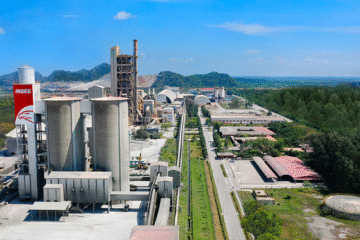Thailand is solidifying its position as the ASEAN leader in electric vehicle (EV) manufacturing with the strategic launch of the EV 3.5 incentive package (2024–2027). This new policy framework dramatically accelerates EV and battery investments by blending consumer rebates, tax relief, and binding local production commitments—all supported by robust factory infrastructure and export flexibility.
EV 3.5: A Clear Roadmap for Investors
The EV 3.5 package offers a compelling, transparent framework for automakers and battery manufacturers:
- Generous incentives, including cut-rate excise tax (just 2%) and import duty waivers for kind-imported EVs through 2024–2025.
- Point-of-sale rebates for mass-market EVs (below THB 2 million): THB 100,000 in 2024 and THB 75,000 in 2025 for models with battery capacity ≥ 50 kWh—scaled rebates for smaller systems. Premium models benefit indirectly via preferential tax rates.
- Binding local assembly targets: From 2026, manufacturers must build two locally assembled EVs for every one imported, and three for every one by 2027. Exports now count toward these targets, unlocking greater flexibility to balance domestic demand and regional distribution.
Battery Sector Gets Direct Boost
Battery manufacturers are not left behind—projects aiming to meet performance thresholds (e.g. ≥ 150 Wh/kg energy density and 1,000 durability cycles) can tap into Thailand’s National Competitiveness Fund.
Investor-Friendly BOI Support
Thailand’s Board of Investment (BOI) amplifies EV 3.5 through comprehensive incentives:
- Corporate income tax exemptions for up to 8 years, especially for high-investment projects.
- Non-tax support, including 100% foreign ownership, land ownership permissions, and fast-track visas and work permits for expatriate staff.
- Stringent compliance requirements—including bank guarantees, industry standards, and testing certification—ensure reliability and subsidy validity.
Market Momentum & Infrastructure Buildout
Thailand is the largest EV market in ASEAN, with approx. 70,000 EVs registered in 2024—a dramatic leap from under 10,000 in 2021.
The infrastructure build-up is equally impressive—>3,700 charging stations (11,600+ connectors) as of early 2025, 6,000+ DC fast chargers, with plans for 12,000 DC fast points nationwide by 2030.
Fleet electrification is surging, and consumer sentiment in urban areas now favors EVs, thanks largely to subsidies and the promise of lower running costs.
Competitive Edge in ASEAN
Thailand offers a compelling proposition relative to regional peers:
| Country | Competitive Factor |
|---|---|
| Thailand | Largest market, strong supply chain, clear policy and infrastructure commitment |
| Indonesia | Massive nickel reserves, but supply chain uncertainties and volatile policies |
| Vietnam | Rapid EV growth, but immature local supplier base and higher execution risk |
Major global firms are active: BYD already exports from its Rayong plant; Hyundai commits ₿1B in EV and battery assembly; cell manufacturers like Gotion, PTT, and Sunwoda are scaling local operations.
Caution and Forward Planning
Investors should account for:
- Aggressive price competition—Chinese brands dominate the local EV market.
- Currency risk due to baht volatility.
- Financial compliance demands tied to incentive eligibility.
- Battery tech shifts that could render legacy infrastructure suboptimal.
Conclusion
Thailand’s EV 3.5 strategy—comprehensive, investor-aligned, and future-looking—marks a turning point for the region’s EV market. By fusing fiscal incentives with strong policy clarity, fast-growing infrastructure, and export flexibility, Thailand is making a compelling case for becoming Southeast Asia’s EV battery and manufacturing hub.


